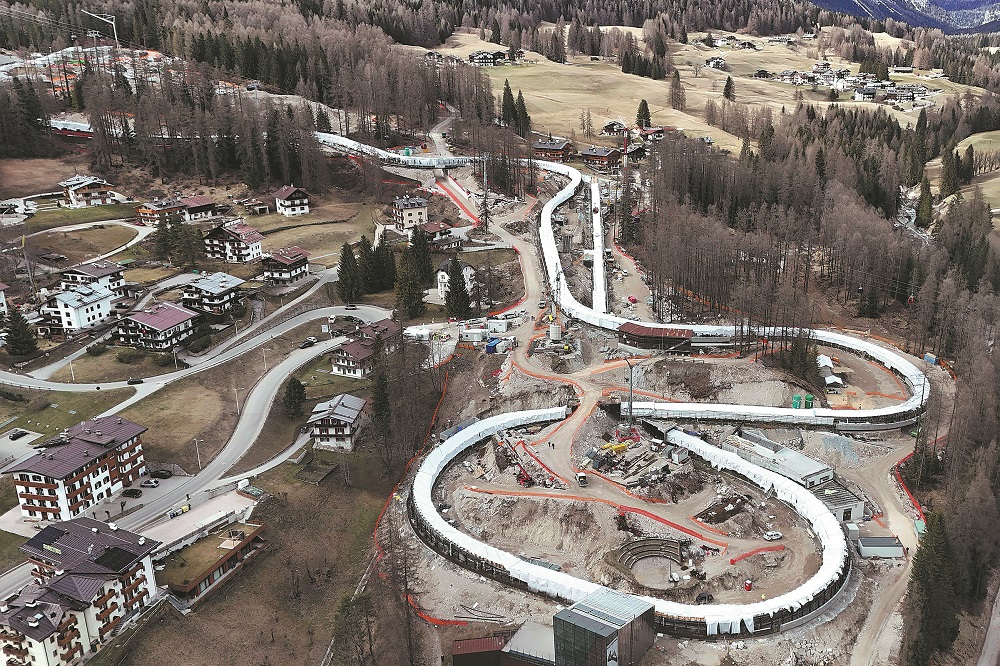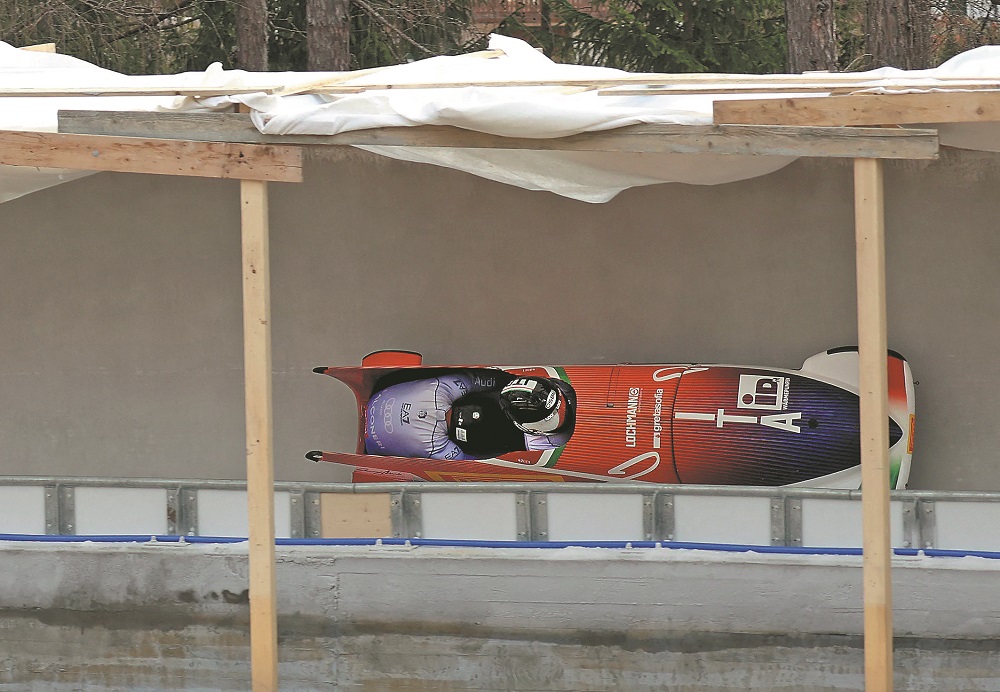
An aerial view of the Cortina Sliding Center, the venue for the bobsleigh, luge and skeleton events at the Milano-Cortina 2026 Winter Olympics, in Cortina d'Ampezzo, Italy, on Tuesday. Dozens of athletes will carry out a series of test runs over the course of the week. AP
CORTINA D'AMPEZZO, Italy — After many setbacks, controversies and only 13 months of construction, a feat hailed as "an Italian miracle", the sliding track for the 2026 Milano-Cortina Winter Olympic Games was inaugurated on Tuesday.
Italy's Mattia Gaspari may not be among the gold medalists in the Dolomites next year, but the 31-year-old skeleton specialist has already made history.
Gaspari was the first to race down the much-discussed Cortina track as part of its pre-homologation process to ensure its safety for competitors.
Over the course of the week, dozens of bobsleigh, luge and skeleton athletes will carry out a series of test runs on the 1.75-kilometer track and its 16 turns, where speeds can hit 140km/h.
Run times are estimated to be around 55-60 seconds.
When construction work began in February 2024, late for a project of this scale and complexity, many doubted that it could be completed in time for the Olympics, which take place from Feb 6 to 22.
Not Matteo Salvini, the second-in-command and minister of Infrastructure and Transport in Giorgia Meloni's hard-right government.
Salvini relaunched the project at the end of 2023, when organizers wanted to relocate the 12 bobsleigh, luge and skeleton events to neighboring Austria or Switzerland because of the lack of a functioning track in Italy.
"I want to thank the workers who came from all over the world to Cortina to create this miracle that represents Italy so well," the Italian deputy premier said.
"Where there's a will, there's a way. Italian engineers and architects are without equal in the world," said Salvini, comparing the sliding track to Filippo Brunelleschi's famed 15th-century dome over Florence Cathedral.
"History is full of Italians who dared. At the time, it was said of this dome that it would never last. Six centuries later, it's still there. This will also apply to those who say these Olympic Games are too expensive."

A Team Italy bobsleigh on the track during a testing day at the new Olympic sliding venue in Cortina d'Ampezzo, Italy, on Tuesday. AFP
'Incredible feeling'
Perhaps to appease those worried about its future after the Olympics, the president of the Veneto region, Luca Zaia, hailed the track, the first in the world, its promoters say, to use glycol, rather than ammonia for its refrigeration, as "our Guggenheim Museum".
"People will come to see a great achievement in terms of architecture and engineering," he said.
Local conservation groups had expressed anger over both the track's environmental impact and its usefulness after the Olympics, as bobsleigh, luge and skeleton are very niche sports in Italy.
The final work on the start and finish areas and the locker rooms will be completed by November.
By completion, the 'Sliding Centre' will have cost 118 million euros ($127m), while the budget for the 2026 Olympic Games is five billion euros, including 3.5 billion euros for the construction and renovation of sports venues and transportation infrastructure.
"Building a track in 305 days has never been done before," said Ivo Ferriani, president of the International Bobsleigh and Skeleton Federation (IBSF), noting that the average construction time for such a venue is 700 days.
"To be honest, I never really doubted, myself. It was a huge challenge, but we managed to turn a problem into a model," he said.
"It's an incredible feeling to go down this track," said Italian bobsledder Patrick Baumgartner.
"I've been doing this sport for 15 years, and this is the first time I've piloted on a track in Italy, at home."
There are test events at the Cortina track for all three sliding sports — bobsled, skeleton and luge — scheduled for throughout the fall. They will be important for sliders to familiarize themselves with the track and feel safe when competing at the Olympics.
Safety has taken on more importance since the death of Georgian luger Nodar Kumaritashvili in a training crash hours before the start of the opening ceremony for the 2010 Vancouver Games.
Luge athletes are scheduled to have an international training period at the new track from Oct 27 through Nov 2, then return for a test event at the venue in the final week of November.
The bobsled and skeleton tours will hold their respective international training periods at the track from Nov 7-16, followed by the season-opening World Cup races there from Nov 17-23.
Agencies